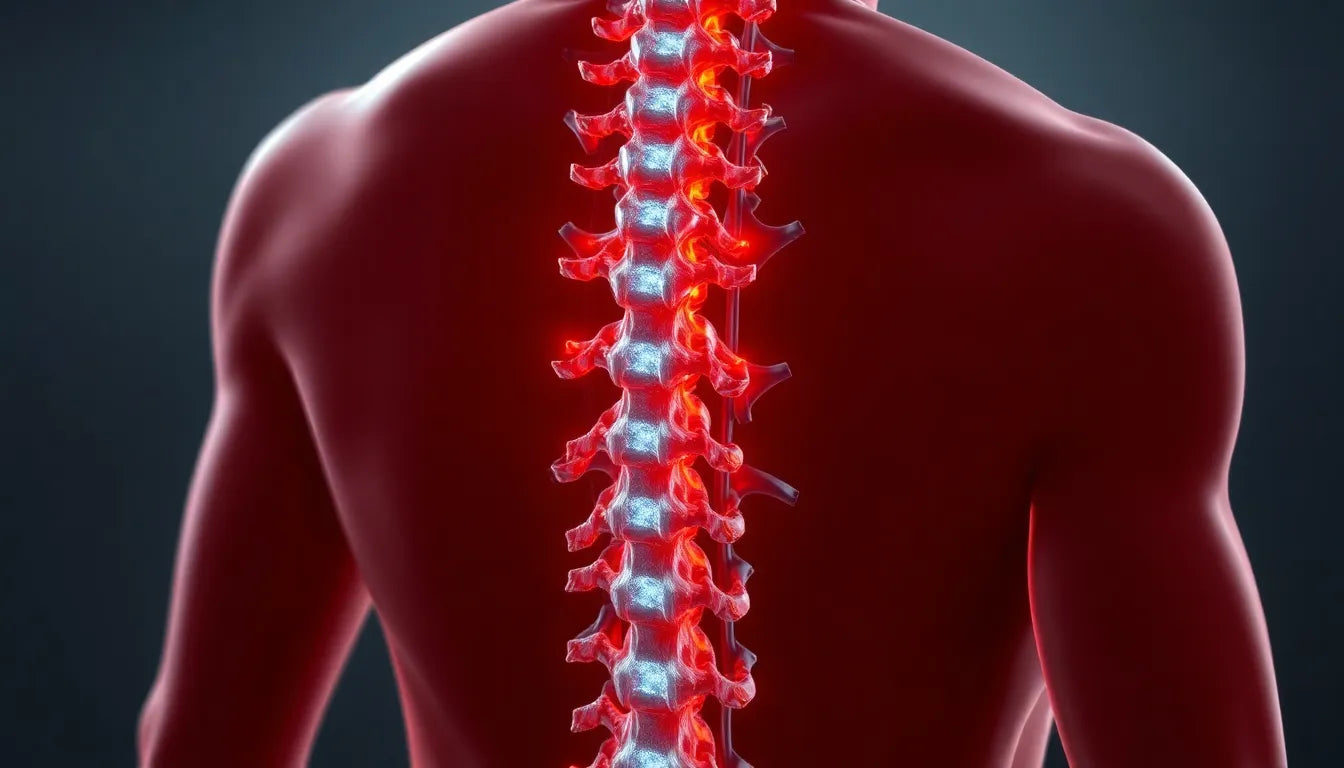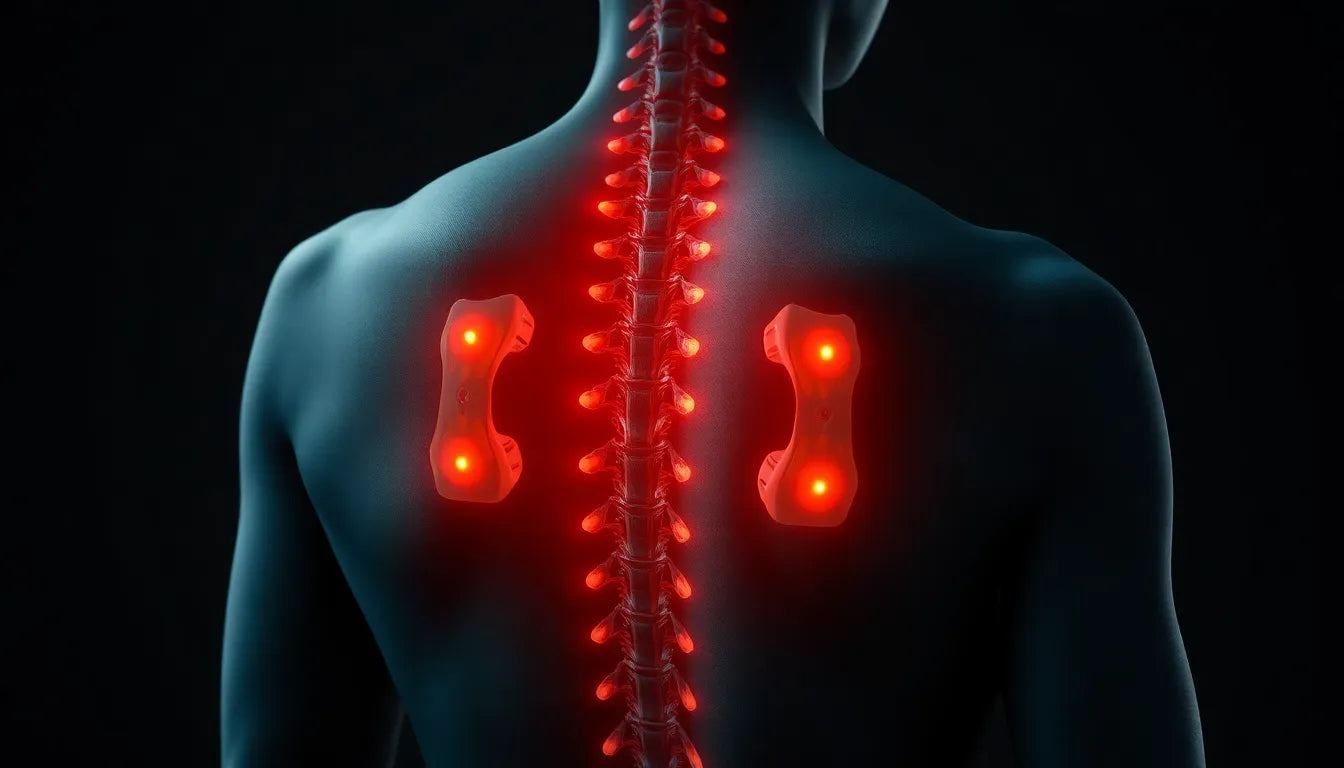Neck pain is a common ailment that affects millions of people worldwide, often disrupting daily activities and diminishing quality of life. Among the various causes of neck discomfort, a herniated disc in the cervical spine stands out as a prevalent issue. Understanding what a herniated disc in the neck feels like is crucial for recognizing the symptoms early and seeking appropriate treatment.
defining a herniated disc
A herniated disc occurs when the soft, gel-like center of a spinal disc pushes through a crack in the tougher exterior casing. This can happen in any part of the spine, but when it occurs in the cervical region, it can lead to significant discomfort and other symptoms. The discs in our spine act as cushions between the vertebrae, absorbing shocks from daily activities like walking, lifting, and twisting. When a disc herniates, it can press on nearby nerves, causing pain and other symptoms that can radiate beyond the neck.
importance of understanding symptoms
Recognizing the symptoms of a herniated disc in the neck is essential for early diagnosis and treatment, which can prevent further complications. Many people may initially dismiss neck pain as a minor issue, but when left untreated, a herniated disc can lead to chronic pain, reduced mobility, and even neurological problems. Early intervention can significantly improve outcomes, allowing for more effective management of the condition and a quicker return to normal activities.
In conclusion, understanding how a herniated disc in the neck feels is not just about recognizing pain; it's about being informed and proactive in managing one's health. By staying alert to the symptoms and seeking medical advice when necessary, individuals can take control of their neck health and prevent long-term issues. As we delve deeper into the specific symptoms and causes in the following sections, you'll gain a clearer picture of this condition and how to address it effectively.
symptoms and descriptions of a herniated disc in the neck
Experiencing a herniated disc in the neck can manifest in various ways, with symptoms that can range from mild discomfort to severe pain. Understanding these symptoms is key to recognizing the condition early and seeking appropriate treatment.
pain and tenderness
One of the most common symptoms is localized pain in the neck area. This pain can sometimes be sharp and intense, making it difficult to move the neck freely. In some cases, the pain may radiate to other areas, such as the jaw, shoulders, or arms, due to the proximity of nerves in the cervical region. This radiating pain can be particularly troublesome, as it may mimic other conditions, leading individuals to overlook the possibility of a herniated disc.
radiating pain
The sensation of pain extending from the neck to surrounding areas is often due to nerve compression. When a disc herniates, it can press against nearby nerves, causing intermittent pain that can travel along the nerve pathways. This type of pain is not only uncomfortable but can also affect day-to-day activities, making tasks like lifting objects or turning the head more challenging.
numbness and tingling
A herniated disc in the neck may also lead to sensations of numbness or tingling, often described as "pins and needles," in the arms. This occurs because the herniated disc can interfere with normal nerve function, disrupting the signals that travel between the brain and the arms. As a result, individuals may experience a loss of sensation or a tingling feeling that can be both distracting and concerning.
muscle weakness
Another potential symptom is muscle weakness, particularly in the shoulders or arms. This weakness can result from the pressure a herniated disc places on the nerves responsible for muscle control. Over time, this pressure can lead to muscle spasms or a decrease in strength, impacting one's ability to perform everyday tasks and diminishing overall quality of life.
medical insights and patient perspectives
Medical professionals, such as those from WebMD and Columbia Neurosurgery, emphasize the importance of understanding these symptoms from a clinical perspective. They highlight that while neck pain is a common ailment, the specific symptoms associated with a herniated disc require careful evaluation to determine the best course of action. Diagnostic procedures, such as MRI or CT scans, are often recommended to confirm the presence of a herniated disc and assess its severity.
From a patient-oriented standpoint, sources like Florida Surgery Consultants provide valuable insights into managing these symptoms. They focus on the importance of recognizing the signs early and seeking medical advice to explore treatment options. Patient experiences often highlight the challenges of living with a herniated disc, emphasizing the need for effective symptom management to maintain a good quality of life.
In conclusion, understanding how a herniated disc in the neck feels involves recognizing a range of symptoms, from localized pain to more widespread effects like numbness and muscle weakness. By being informed about these symptoms and seeking timely medical evaluation, individuals can take proactive steps to manage their condition and prevent further complications. As we continue to explore this topic, the next section will delve into personal stories, preventive measures, and treatment options to provide a comprehensive guide for those affected by this condition.
personal stories and preventive measures
Real-life experiences can offer valuable insights into what living with a herniated disc in the neck entails. Consider the story of Jane, a graphic designer who began experiencing neck pain that radiated to her arms. Initially dismissing it as stress-related, she sought medical advice only when the pain became unbearable. Through physical therapy and lifestyle adjustments, including improved posture and regular neck exercises, Jane managed to regain her quality of life. Her story underscores the importance of early intervention and preventive measures.
Preventive strategies play a crucial role in managing and reducing the risk of a herniated disc in the neck. Maintaining good posture, especially during long hours at a desk, can alleviate unnecessary stress on the cervical spine. Ergonomic practices, such as adjusting chair height and screen level, are essential in promoting a healthy neck alignment.
Regular exercise is another vital component of prevention. Engaging in activities that strengthen the neck and shoulder muscles can provide better support for the cervical spine. Simple exercises like neck stretches and shoulder shrugs can be easily incorporated into daily routines, helping to maintain flexibility and strength.
treatment options and visual aids
When it comes to treatment, a range of options is available depending on the severity of the herniated disc. Conservative treatments are often the first line of defense, including physical therapy, pain medication, and lifestyle modifications. These approaches focus on relieving symptoms and improving mobility without surgical intervention.
In cases where conservative treatments do not provide sufficient relief, surgical options may be considered. Procedures such as discectomy or spinal fusion can be effective in alleviating pressure on the nerves and restoring function. However, surgery is typically reserved for severe cases where other treatments have failed.
Visual aids, such as diagrams or illustrations, can be incredibly helpful in understanding the anatomy of the cervical spine and the impact of a herniated disc. These tools can provide a clearer picture of how the condition develops and the areas affected, making it easier for individuals to comprehend their diagnosis and treatment options.
frequently asked questions
What are the early signs of a herniated disc in the neck?
Early signs often include mild neck pain and stiffness, which may gradually worsen. Some individuals may also experience headaches or discomfort that radiates to the shoulders or arms.
How is a herniated disc in the neck diagnosed?
Diagnosis typically involves a physical examination and imaging tests such as MRI or CT scans, which help visualize the extent of the disc herniation and its impact on nearby nerves.
Can a herniated disc in the neck heal on its own?
While some herniated discs can improve over time with conservative treatment, the healing process varies for each individual. Factors such as age, overall health, and the severity of the herniation influence recovery.
What are the best exercises for preventing a herniated disc?
Neck-strengthening exercises, such as chin tucks and side bends, are beneficial. Stretching exercises that improve flexibility, like neck rotations and shoulder rolls, can also help prevent disc issues.
When should one seek medical attention for neck pain?
It is important to consult a healthcare professional if neck pain is severe, persistent, or accompanied by symptoms such as numbness, tingling, or muscle weakness, as these may indicate a more serious condition.
In conclusion, understanding what a herniated disc in the neck feels like involves recognizing a range of symptoms and being proactive in seeking diagnosis and treatment. By incorporating preventive measures and exploring treatment options, individuals can effectively manage their condition and maintain a good quality of life.



